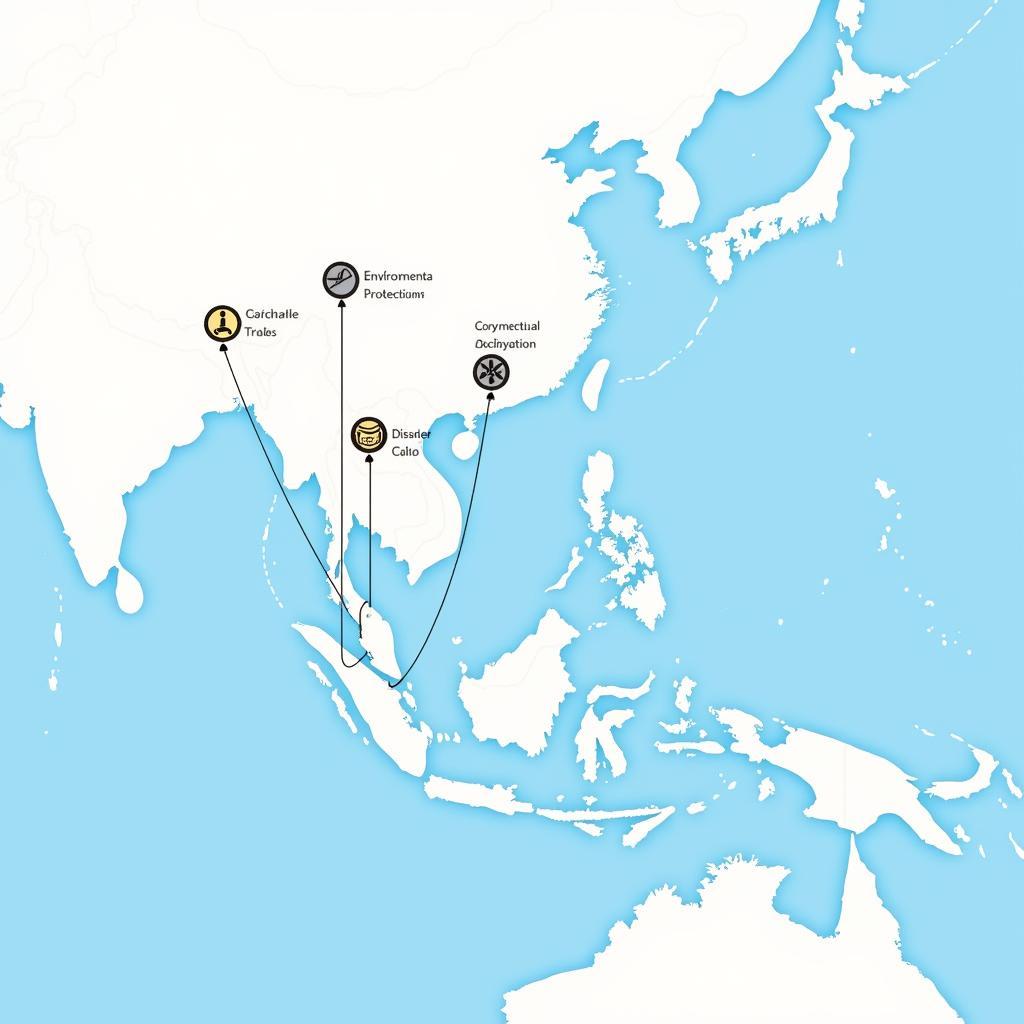ASEAN and North America represent two dynamic regions with intertwined economies and increasingly complex political relationships. This article explores the multifaceted connections between ASEAN and North America, delving into trade, investment, political dialogues, and cultural exchange. We’ll examine the key players, emerging trends, and the potential for future collaboration between these two vital regions.
Economic Ties: Trade and Investment between ASEAN and North America
ASEAN has emerged as a crucial trading partner for North America, driven by factors such as growing consumer markets, competitive labor costs, and strategic geographic location. North American companies have invested heavily in ASEAN member states, particularly in sectors like manufacturing, technology, and services. This investment has fueled economic growth in ASEAN and created jobs, while also benefiting North American businesses seeking new markets and opportunities. The US-Mexico-Canada Agreement (USMCA) and various bilateral trade agreements further facilitate this exchange.
The burgeoning middle class in Southeast Asia presents a lucrative market for North American goods and services. Conversely, ASEAN countries export a wide range of products to North America, including electronics, textiles, and agricultural products. This reciprocal trade relationship fosters economic interdependence and strengthens ties between the two regions.
Political Dialogues and Security Cooperation
Beyond economic interests, ASEAN and North America engage in various political dialogues and security cooperation initiatives. The ASEAN Regional Forum (ARF) provides a platform for discussing regional security issues, including maritime security, counterterrorism, and non-proliferation. Bilateral dialogues between individual ASEAN countries and North American nations further enhance political understanding and cooperation. These dialogues are crucial for addressing shared challenges and promoting stability in the broader Asia-Pacific region.
The rise of China as a major player in the region has further complicated the geopolitical landscape. ASEAN countries navigate a complex balance between maintaining strong economic ties with China while also seeking strategic partnerships with North America as a counterbalance. This dynamic makes the relationship between ASEAN and North America increasingly important in the context of regional power dynamics.
Cultural Exchange and People-to-People Connections
While trade and politics often dominate the headlines, cultural exchange and people-to-people connections play a vital role in strengthening the relationship between ASEAN and North America. Educational exchanges, tourism, and cultural programs promote mutual understanding and appreciation between the diverse cultures of these two regions. These interactions foster greater empathy and build bridges between communities.
ASEAN’s rich cultural heritage, including its vibrant arts, music, and culinary traditions, attracts visitors from North America. Similarly, ASEAN citizens are increasingly interested in exploring North American culture and educational opportunities. These exchanges create lasting connections and contribute to a more interconnected world. For example, some residents may be interested in the ASE Western Otolaryngolgy Residency.
Conclusion: A Future of Collaboration
The relationship between ASEAN and North America holds significant potential for future collaboration. Strengthening economic ties, enhancing political dialogues, and fostering cultural exchange will be crucial for navigating the challenges and opportunities of the 21st century. ASEAN and North America have much to gain from continued engagement and cooperation. This collaboration is essential for promoting regional stability, economic prosperity, and mutual understanding in an increasingly interconnected world.
FAQs about ASEAN-North America Relations
-
What is ASEAN? The Association of Southeast Asian Nations (ASEAN) is a regional intergovernmental organization comprising ten Southeast Asian countries.
-
What are the main areas of cooperation between ASEAN and North America? Key areas include trade, investment, security, and cultural exchange.
-
Why is the ASEAN-North America relationship important? It promotes regional stability, economic growth, and mutual understanding.
-
How does the rise of China impact the relationship? It adds complexity to the geopolitical landscape and influences strategic partnerships.
-
What are some examples of cultural exchange programs? Student exchange programs, cultural festivals, and tourism initiatives.
You may also be interested in ASE Kaohsiung Factories or ASE baseball tournaments in Arlington 2019. Perhaps you are looking for information on ASE Americas Wireless or ASE Zone 2DVD Format on Zone 1 Player.
For further assistance, please contact us at Phone: 0369020373, Email: aseanmediadirectory@gmail.com or visit our office at Thon Ngoc Lien, Hiep Hoa, Bac Giang, Vietnam. We have a 24/7 customer support team.

